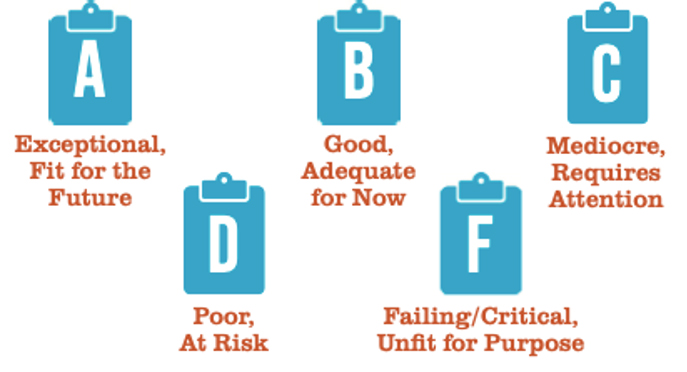ASCE Virginia Report Card
Every four years, the American Society of Civil Engineers’ Report Card for America’s Infrastructure depicts the condition and performance of American infrastructure in the familiar form of a school report card—assigning letter grades based on the physical condition and needed investments for improvement.
The 2022 Report Card for Virginia’s Infrastructure was created by over 75 volunteer civil engineers across the state, who collected and analyzed data, reviewed findings, and presented conclusions. The committee collaborated with ASCE National and the Committee on America’s Infrastructure to provide a snapshot of Virginia’s infrastructure, both locally and nationally. The Report Card sections are graded based on eight criteria: capacity, condition, funding, future need, operation and maintenance, public safety, resilience, and innovation. ASCE defines these grades as follows:

Virginia’s infrastructure is vital to the health, wealth, and safety of 8.6 million residents, 200,000 businesses, and 100 million visitors annually. The state is expanding its rail service, moving 127 million pounds of freight and 1.5 million passengers annually, while the Port of Virginia increases cargo transport by rail. Improved water systems are reducing floods faster than national benchmarks.
However, challenges persist. Northern Virginia’s economic growth puts pressure on transportation and maintenance, while the Tidewater region faces risks from severe weather and contamination. Rural Southwestern Virginia struggles to upgrade infrastructure, and inflation, workforce issues, and political gridlock threaten progress.
Despite these challenges, Virginia is making strides. Passenger rail expansion plans, supported by funding from the 2021 Bipartisan Infrastructure Law, continue. Bus systems like the Virginia Breeze are thriving post-pandemic, and AMTRAK’s passenger routes are breaking records. In Hampton Roads, a wastewater treatment facility is pioneering solutions for saltwater intrusion and land subsidence. While traffic deaths are on the rise, the Commonwealth Transportation Board is prioritizing safety. Read Full Report Here.

